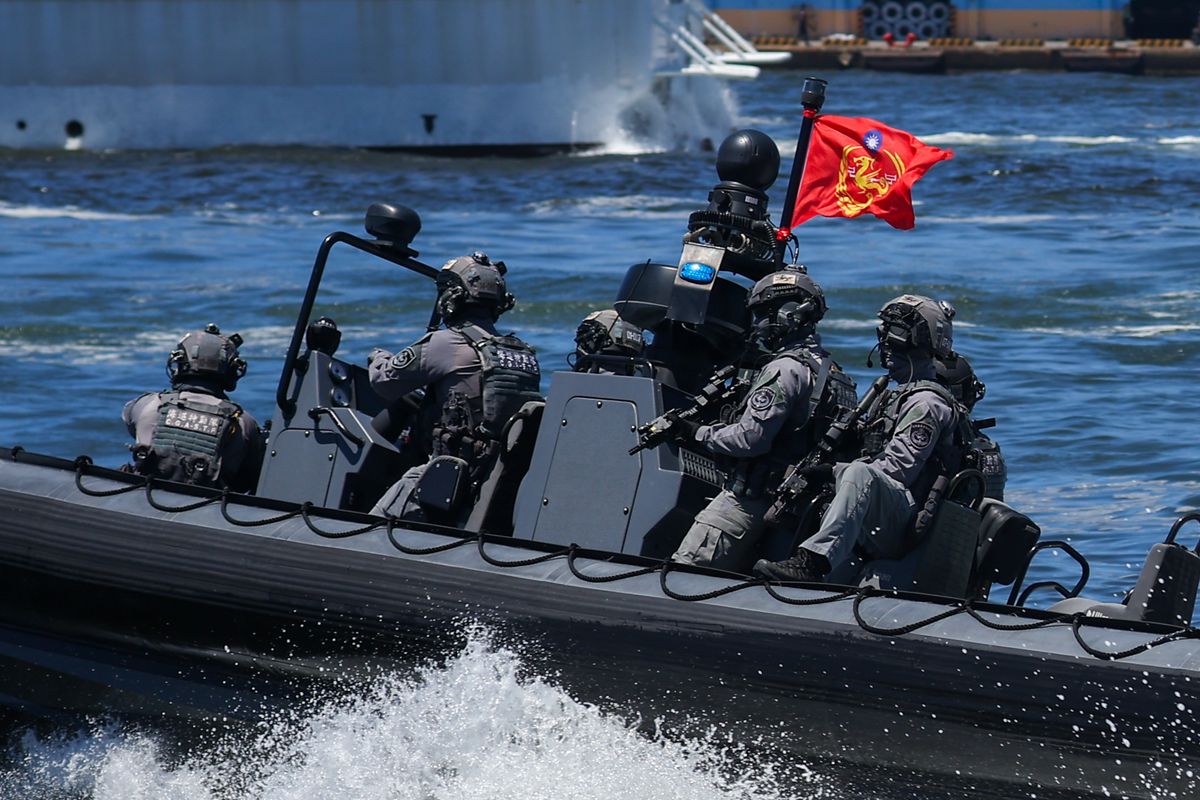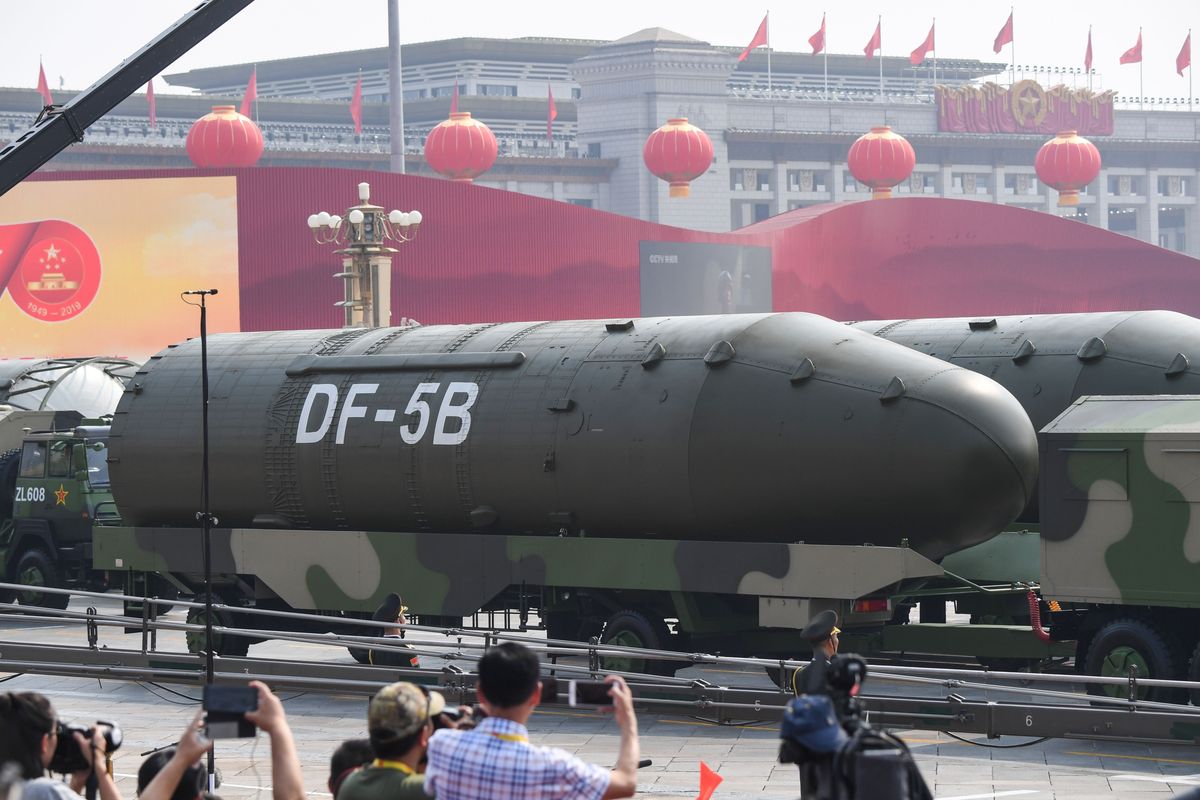The South China Sea is rapidly becoming one of the most dangerous places on earth. Beijing has long claimed most of the sea as its sovereign territory, although neighbors Vietnam, the Philippines, Brunei, and Taiwan have rival claims. Since late 2013, China has sought to consolidate its control over the disputed waters by reclaiming land and creating a series of artificial islands complete with runways, fueling widespread concern about the military consequences of this assertion of maritime sovereignty.
“If you look at all these facilities,” Admiral Harry Harris, head of the U.S. Pacific Command (PACOM) told the Senate Armed Services Committee recently, “you could imagine a network of missile sites, runways for their fifth generation fighters and surveillance sites, and all that—it creates a mechanism in which China would have de-facto control over the South China Sea.”
The implications of such a development are enormous. $5.3 billion in trade passes through the South China Sea every year, including one-third of all crude oil shipments and half of all natural gas shipments.
More broadly, the creation of what some have described as a series of unsinkable Chinese aircraft carriers has begun to reshape the balance of power in the Pacific, where the U.S. has been the dominant influence since the end of World War Two.
It is consistent with what appears to be Beijing’s long-term strategic goal of weakening U.S. alliances and the U.S. position in the region to allow China to become the pre-eminent power. Indeed, some Chinese strategic thinkers have openly talked about pushing the U.S. back beyond what is widely described as the “first island chain.” This is the group of islands in the western Pacific—Japan, Taiwan, the Philippines, and Indonesia—which run from north to south roughly along the Chinese coast. Many in China see this area, in which the U.S. has long been the dominant maritime power, as Beijing's natural sphere of influence.
Beijing’s muscular new approach is a reflection of China’s growing confidence—a belief that its economic clout and military strength means it no longer needs to defer as much to Washington and its allies. This calculation has been reinforced by a widely shared assessment that the U.S., weakened by the 2007-08 financial crisis, over-reach in the Middle East, and domestic political dysfunction, is in no position to effectively push back.
It is this context that makes the current discussion in Washington about how to respond to China in the South China Sea so important.
The Obama Administration and the U.S. military have stressed that the U.S. “will sail, fly, and operate anywhere that international law permits.” And while no action was taken in the run-up to or during the recent state visit of Chinese leader Xi Jinping, a series of carefully orchestrated leaks and public statements since then have made clear what is being called a “Freedom of Navigation” operation is going to take place.
The idea is to have U.S. naval vessels sail within the 12 mile limit of the new artificial Chinese islands, to show that while Washington does not take sides on the rival claims to the South China, it does not recognize China’s claims, with all that they imply.
No details of the operation have been made public, and it appears at the moment they are still being discussed. But whatever the form, any potential move poses an acute challenge for the U.S. Washington needs to reinforce its definition of freedom of navigation to both the Chinese and the region, but to do so in a way that minimizes the risks of a confrontation that could spiral into a dangerous crisis.
But the pressures on Xi Jinping are equally intense. He has built his reputation as a tough leader who will not hesitate to take strong steps to defend China’s interests. Moreover, he and the Chinese Communist Party have made nationalism the defining element of their identity and a central feature underpinning the Party’s domestic legitimacy.
So potent is nationalistic sentiment that, even in an authoritarian system like China’s, Xi would likely face intense criticism if he were seen to be less than robust in responding to challenges on an issue of such critical importance—strategically, economically, and ideologically—as control of the South China Sea. At a time of domestic difficulties, with a slumping economy, a controversial anti-corruption drive, and indications of tensions within the leadership, the pressure on Xi to take a hard line would be intense.
Further complicating the situation is the weakness of any crisis management mechanism between Washington and Beijing. In 2001, when China forced down a U.S. Air Force Ep-3 reconnaissance plane, it took several weeks of tense and difficult negotiations to find a resolution that allowed the plane’s detained crew to return home. And this was under a leader, Jiang Zemin, who was heavily invested in good relations with the U.S., at a time when China was not nearly as strong or assertive as it is now.
If a U.S. Navy move in the South China Sea was challenged by the Chinese and led to a confrontation, or, even worse, an armed clash, it is hard to see how the two sides could find an effective way to swiftly de-escalate.
“If the U.S. encroaches on China's core interests,” declared an editorial in China’s Global Times newspaper, “the Chinese military will stand up and use force to stop it.”
The U.S.-China relationship is so complex, and the two economies are so intertwined and mutually dependent, that neither side wants such a confrontation. Yet both sides see that power, prestige, regional relationships, and perceptions of the future balance of power in the Pacific are at stake. Even if the impending U.S. moves do not trigger a serious crisis, the South China Sea will remain a source of tension for a long time to come.












